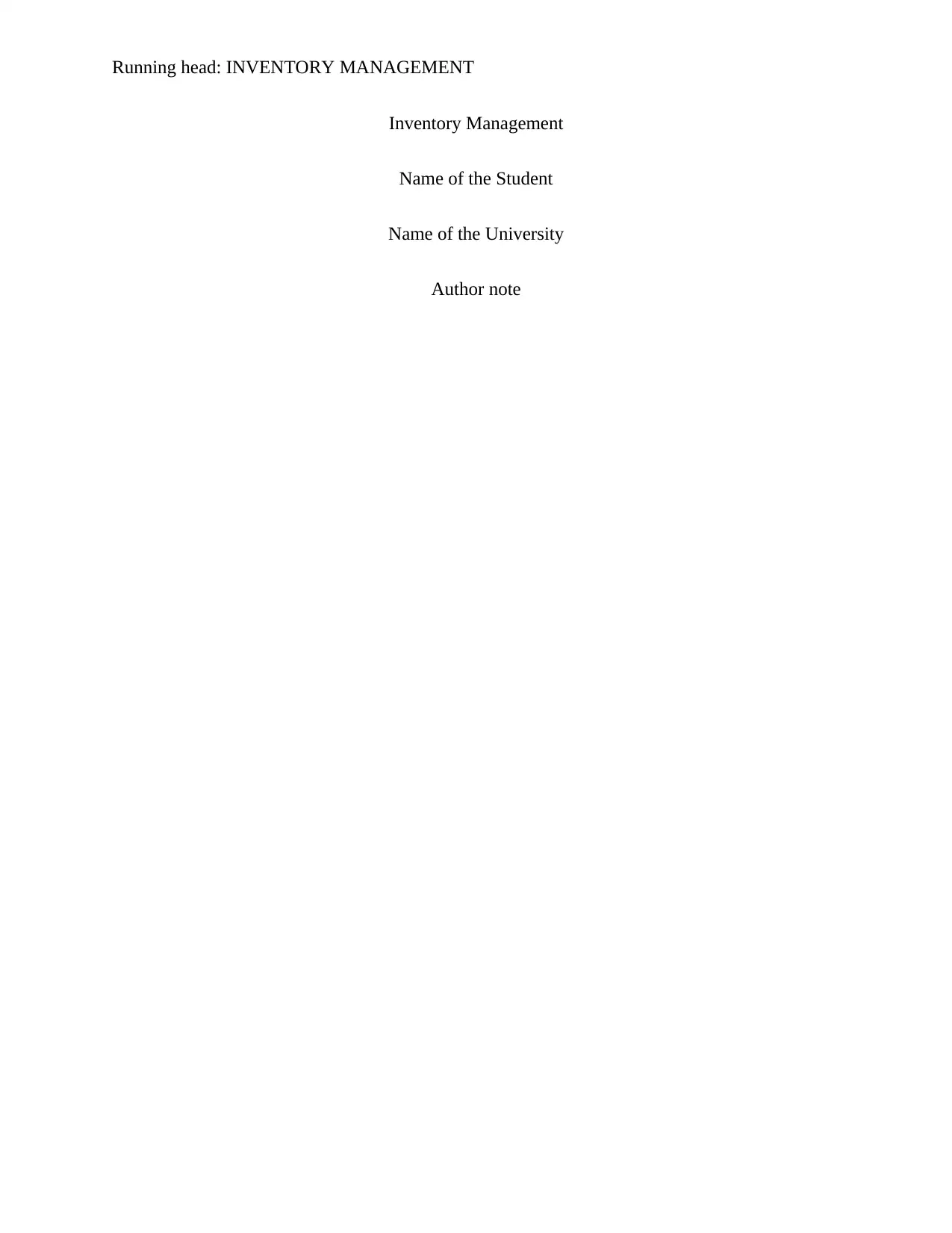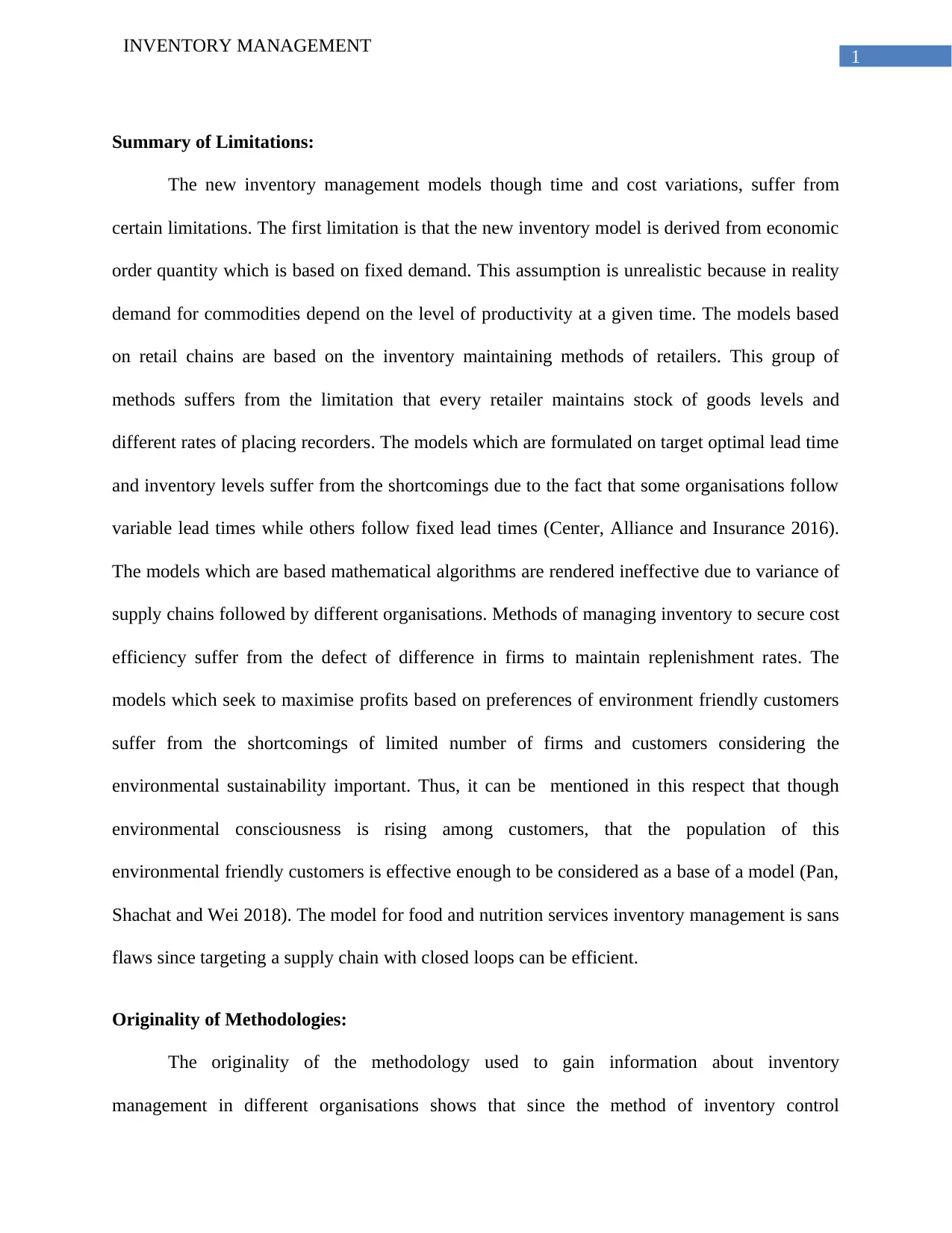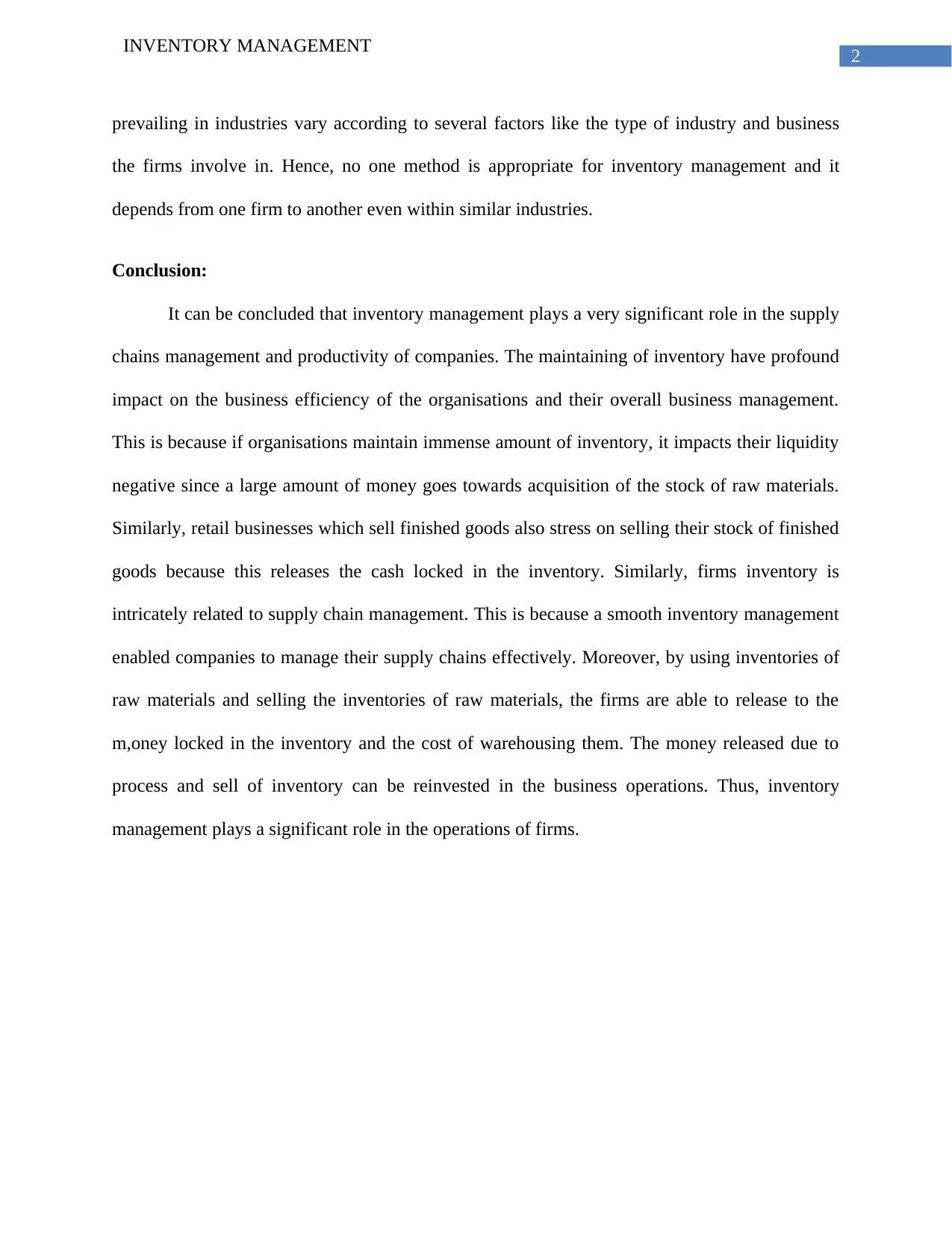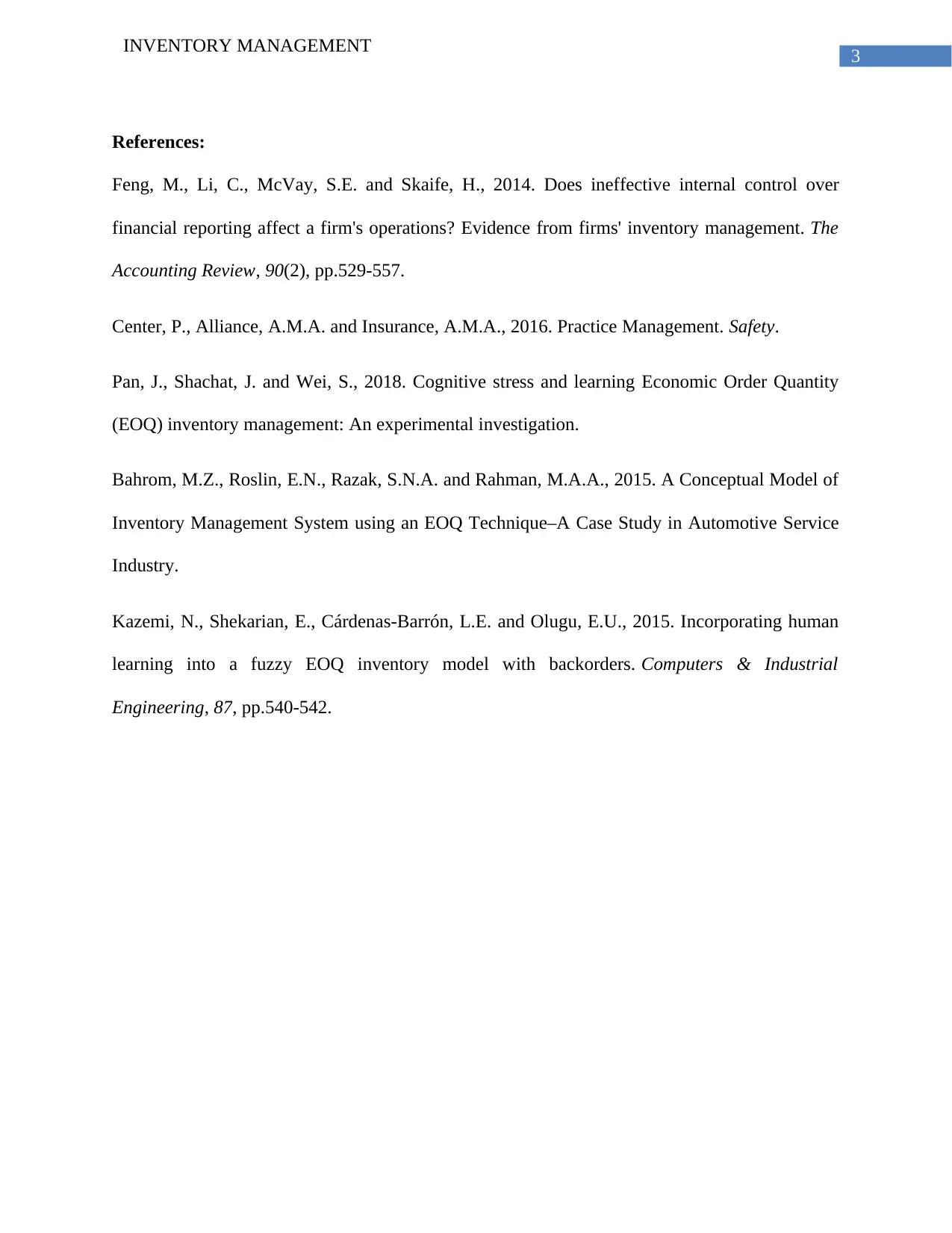Inventory Management Report: Limitations, Originality, and Conclusion
VerifiedAdded on 2023/06/03
|4
|766
|394
Report
AI Summary
This report provides an analysis of inventory management, focusing on its limitations and the originality of methodologies used. It discusses the shortcomings of new inventory models, including those based on economic order quantity, which are often derived from fixed demand assumptions, and the challenges associated with retail-based models. The report highlights the impact of variable lead times, the ineffectiveness of mathematical algorithms due to supply chain variances, and the limitations of models that prioritize environmental sustainability. The originality of the methodology is examined by showcasing how inventory control methods vary across industries and businesses, emphasizing that no single method is universally applicable. The report concludes by underscoring the significant role inventory management plays in supply chain management and business efficiency, emphasizing its impact on liquidity, cash flow, and the ability of firms to reinvest in their operations. References include studies on inventory management, control, and supply chain dynamics.
1 out of 4










![[object Object]](/_next/static/media/star-bottom.7253800d.svg)